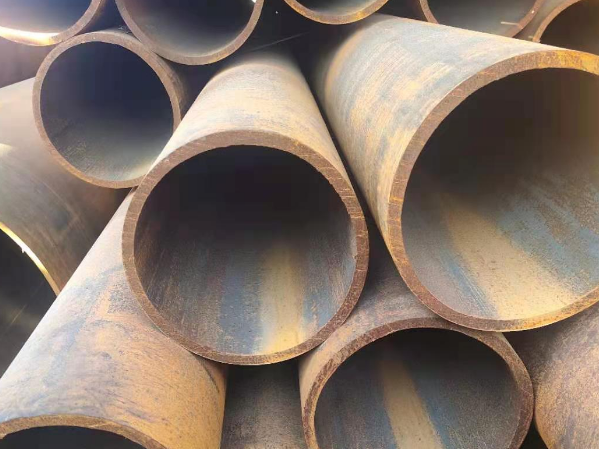Carbon steel tube is prone to rust and is not a material defect.
Carbon steel is a kind of alloy steel. Because its composition contains iron, carbon and other components, its surface is vulnerable to oxygen corrosion attack in air, water, moisture and other environments. When the protective layer on the surface of carbon steel is damaged or there are some gaps on the surface, it is easy to absorb moisture and oxygen in the environment, forming a chemical substance called "rust", which leads to the rust of steel.
1. If the storage environment is relatively dry, the rust will be relatively light.
2. If it is stored in a relatively high humidity environment, the rust will be heavier.
3. If the carbon steel is coated with anti-rust oil, the carbon steel will not easily rust.
4. According to the application, carbon steel can be divided into three types: carbon structural steel, carbon tool steel and free-cutting structural steel. Carbon structural steel is further divided into engineering construction steel and machine manufacturing structural steel.

What are the causes of rusting of carbon steel tubes?
1. Medium that causes product corrosion: Moist air, hand sweat or dirt in contact with the product, water, acid, alkali, salt and chemical gases remaining on the metal surface may cause metal corrosion.
2. Corrosion resistance of metals: Metals that are prone to rust include pig iron, carbon steel and structural alloy steel, etc. Stainless steel, superalloys and titanium alloys will rust in special environments.
3. Parts that are prone to rust: The parts that are easy to contact, adhere to and accumulate corrosive substances include grooves, seams, holes, edges, joint surfaces, hand contact surfaces, parking surfaces, etc. Or rough surface, newly processed surface, sandblasting polished surface, etc., which are easy to rust.
4. Corrosion-prone environment: Generally speaking, processing workshops such as pickling, heat treatment, electroplating, welding, painting, electrolysis, etc. are more prone to corrosion than mechanical processing workshops, because these workshops have a large amount of corrosive media.
Anticorrosion measures for carbon steel tubes:
In order to prevent the occurrence of carbon steel raw materials, corresponding measures need to be taken for protection. The following are some commonly used anti-corrosion measures:
1. Prevent rust by passivation treatment. Passivation treatment is to form a protective oxide layer on the surface of carbon steel, which can prevent the steel from being further corroded by the environment.
2. Carry out surface treatment such as spraying on the surface of carbon steel to improve the hardness and durability of the surface.
3. In the production process, stainless steel, aluminum, plastic and other materials are used instead to reduce the corrosion rate of carbon steel.
4. The use of high-density grease and preservatives can prevent oxygen from entering the surface of carbon steel, thereby reducing the occurrence of oxidation reactions.
To sum up, in view of the problem of carbon steel rusting, we can take various measures to protect it, reduce the corrosion rate of carbon steel and prolong its service life.
Tips: Carbon steel tubes can be divided into seamless pipes and welded steel pipes according to the production method. Seamless steel pipes are made by hot rolling or cold drawing, and have high strength and tightness. Welded steel pipe is made by rolling steel plate or steel strip into a cylindrical shape, and then connecting the weld seams by resistance welding, submerged arc welding and other methods.
Go here to learn more about "Quality requirements for carbon steel pipes"


